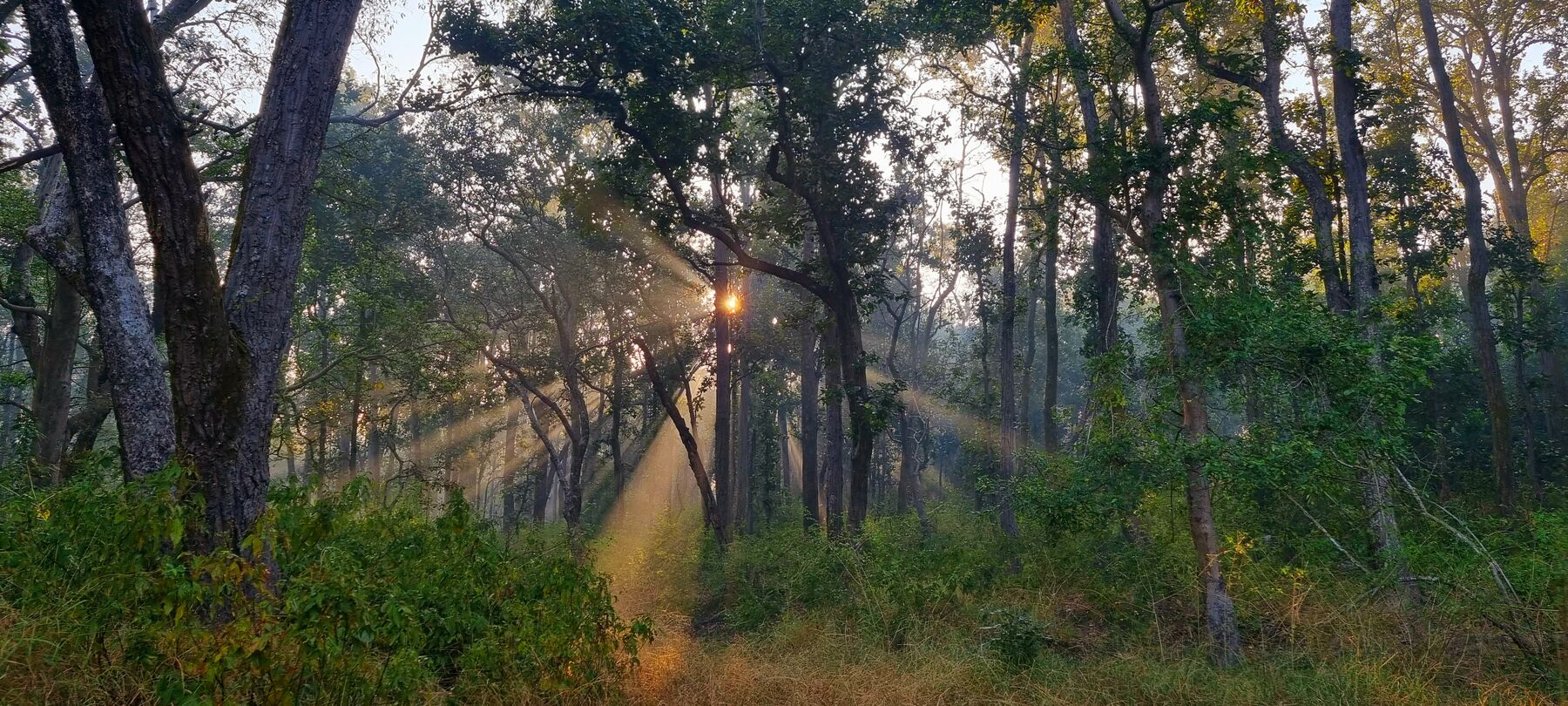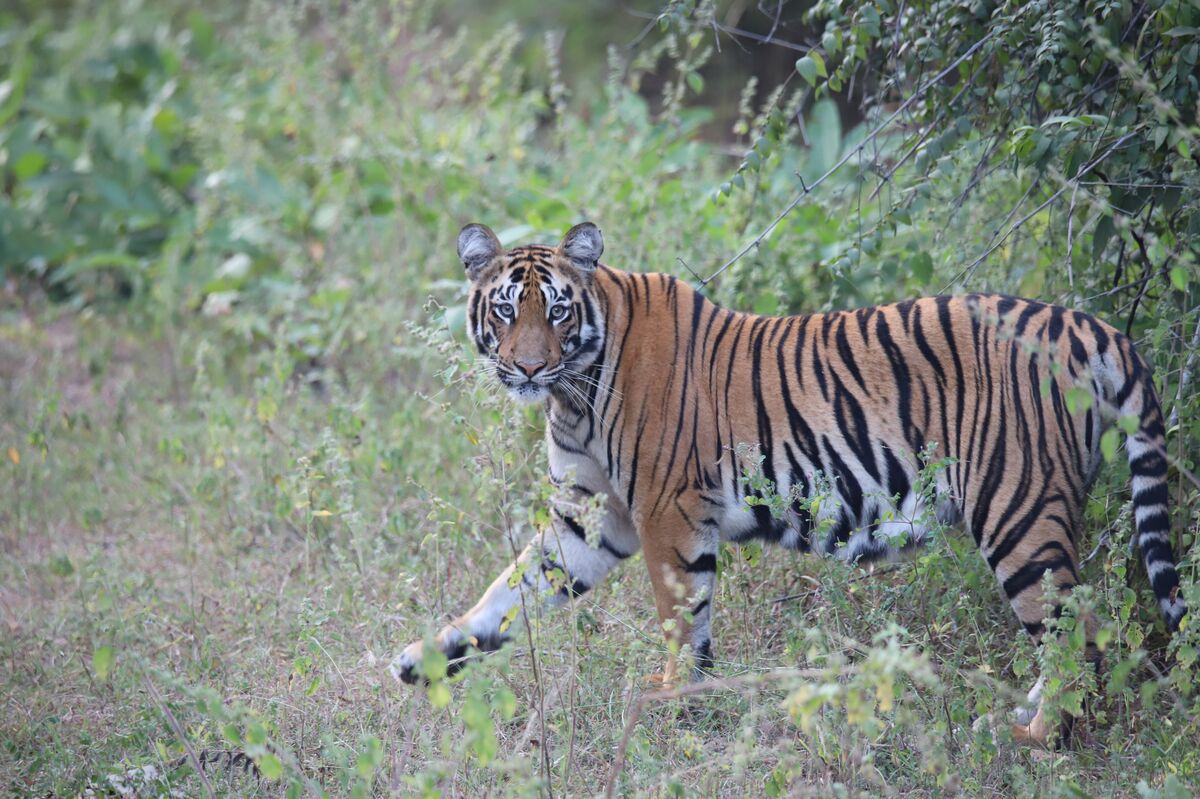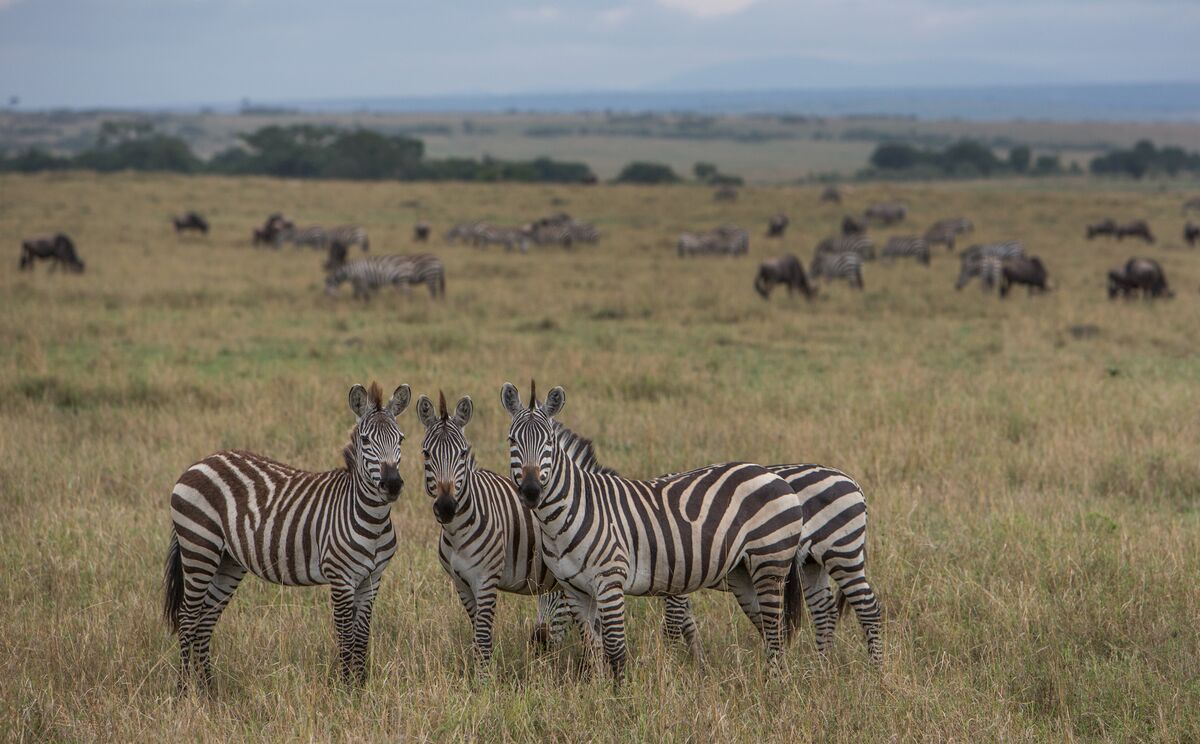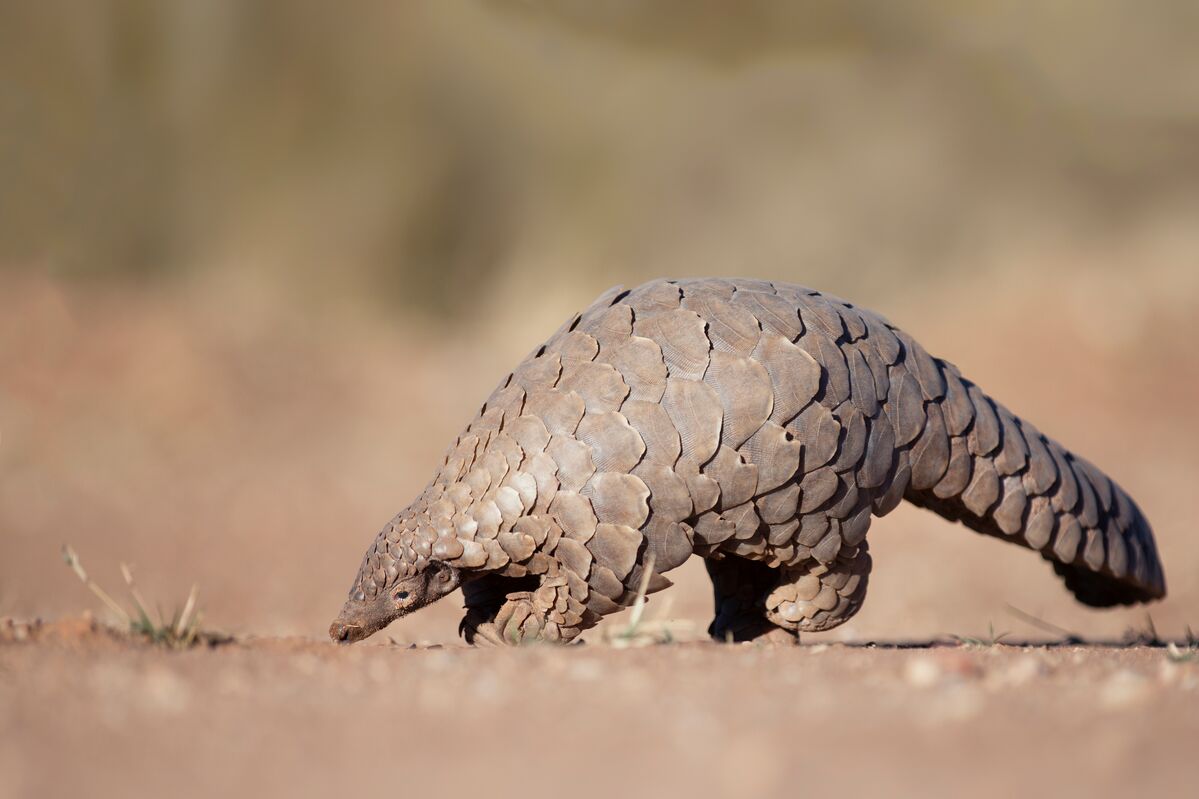Wildlife warriors
19 May 2023
WILDLIFE WARRIORS
Growing scientific evidence shows keeping wildlife in the wild is essential in our fight against the climate crisis. We need to save wild animals to save ourselves, explains Head of Conservation Dr Nikki Tagg.
 (c) Kedar Gore
(c) Kedar Gore
Endangered Species Day is the perfect opportunity to consider the key role nature plays in our fight against climate breakdown. You can get involved by adopting an endangered animal with Born Free today.
What do we need to do to win the climate fight and rebalance our de-stabilised planet? The world is increasingly aware we need to stop burning fossil fuels and protect and restore natural ecosystems. There is, however, a tendency to overlook the importance of the wildlife living in these natural ecosystems. Wild animals ‘engineer’, maintain, regenerate, and restore ecosystems across the planet. Wildlife is our natural warrior in this fight, and we must step up protection. Born Free’s programmatic work gives wildlife a fighting chance.
A climate and biodiversity crisis is upon us. Global average temperatures are likely to reach 1.5℃ above pre-industrial levels in the early 2030s, and this could lead to an increase in frequency and extremity of droughts, flooding, heat stress and heat-related deaths, disease, as well as a decrease in food production and human migration on a global scale.
At the same time, over the last 50 years, the world has lost an estimated 69% of all mammal, fish, bird, reptile, and amphibian populations, according to WWF’s Living Planet Report. One million wildlife species worldwide are at risk of extinction, partly as a result of the fact that 75% of land that is not covered by ice has been converted largely into agricultural land to feed people.
These catastrophes are interconnected and so are their solutions. For any chances of halting and reversing these trends, wildlife is the answer:
• As forest elephants roam in West and Central Africa, they trample on smaller plants and seedlings, giving the larger, carbon-storing trees the space to grow. It is estimated that Africa’s rainforest would lose 6-9% of its ability to store carbon without the work of elephants.
• According to WWF, Indian forests inhabited by tigers were found to contain three times the carbon density of forests where tigers had been eradicated. This may be because the presence of tigers deters encroachment by people, therefore reducing habitat degradation.

(c) Born Free
• Whales feed at depth and release nutrients as they breathe and rest at the surface, stimulating phytoplankton production. Phytoplankton are fantastic photosynthesisers, absorbing atmospheric carbon dioxide, storing the carbon and releasing oxygen.
• Wildebeest in the Serengeti eat large amounts of grass that end up back in the soil via their dung, further encouraging grass to grow and for the ecosystem to be a ‘carbon sink’ (absorbing more carbon than it releases).
• Wildfires are a major source of atmospheric carbon. In North America, bison reduce wildfire fuel biomass by grazing and trampling the soil and forming natural firebreaks as they carve out trails.

(c) George Logan
• Sea otters eat sea urchins, allowing kelp to flourish, which is an important carbon store.
• Pangolins do lots of digging – they eat ants and termites and excavate dens to sleep in – which moves around essential nutrients, critical to the ecosystems where pangolins live. Healthy soil ecosystems have an important carbon sequestration role.

(c) istock
When going about their daily lives, animals are hard at work for the planet: they distribute seeds and supply nutrients, they enhance plant dispersal. They disturb the soil through grazing, digging, trampling and nest building, they change how microbes and chemicals work in these systems, thus storing more carbon. They reduce the frequency and intensity of wildfires; they increase the ‘albedo’ – a measure of ‘reflectiveness’ – of the ground by grazing and exposing bare earth, thus reflecting heat away. (As an aside, the extinction of mammoths led to a global average heating of 1℃ because of the reduced albedo effect.)
By doing all this critical work in the ecosystem, wildlife species promote healthy habitats that capture and store more carbon. While wild animals themselves account for only 0.3% of the carbon in the total global biomass, their functional roles in a natural ecosystem can cause anywhere between 15% and 250% more carbon to be stored in the ecosystem. It is estimated that healthy ecosystems could account for 37% of the carbon reductions needed to limit global temperature rise.
Wildlife is our natural warrior in this fight against the climate crisis. So, we need to step up our preservation of wildlife. We need to protect, restore and rewild on a massive scale. Born Free’s expanding conservation work focusses on the protection of hero species, such as lions, elephants and great apes. With this targeting of large animals, we help to store more carbon and enhance other ecosystem services in the vast habitats in which these animals live.
You can read more on this critical topic by visiting reading our Climate Change and Biodiversity section and clicking the following links:
Scientific Papers:
• Berzaghi et al. (2023) Megaherbivores modify forest structure and increase carbon stocks through multiple pathways
• Berzaghi et al. (2022) Financing conservation by valuing carbon services produced by wild animals
• Malhi et al. (2022) The role of large wild animals in climate change mitigation and adaptation
• Schmitz et al. (2023) Trophic rewilding can expand natural climate solutions
Reports:
• WWF Living Planet Report 2022
• IPBES 2019 – Summary for policymakers of the global assessment report on biodiversity and ecosystem services of the Intergovernmental Science-Policy Platform on Biodiversity and Ecosystem Services
Articles:
• Positive News – The climate solution that not enough people are talking about
• Matthew Gould, The Guardian – Why elephants, otters and whales are nature’s secret weapons against climate breakdown
You can help!
With your support, we can fight climate breakdown by continuing to protect wildlife in their natural habitats, and preserve proper ecosystem functioning that we are all reliant upon. Adopt an endangered Born Free species today to get involved.
